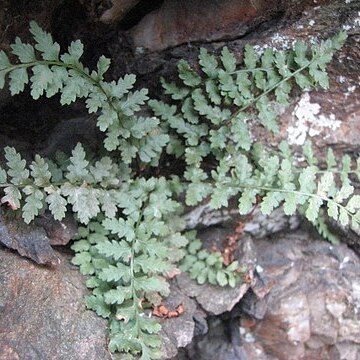Rhizome 1–1.5 mm thick, the numerous narrowly lanceolate scales blackish, 2–4.5 mm; lvs numerous, spreading, 7–25 cm, the petiole brown, to 10 cm; blade linear-oblong, to 20 × 4.5 cm, pinnate-pinnatifid to bipinnate, the rachis brown proximally, green for the distal third or half, bearing scattered slender scales; pinnae 8–15 pairs, alternate or the basal subopposite, short-stalked, deltoid to oblong-lanceolate, sometimes with only one free, superior basal segment (otherwise incised-serrate) or pinnate throughout with 5+ pairs of segments, these obtuse, sharply serrate. Rare, on noncalcareous cliffs and rocks or acid soil; s. N.Y. and N.J. to Ga. and Ala., w. to O., Mo., and Okla. Name applied to both the sterile hybrid (2n=72) between spp. 2 and 4, and to the fertile alloploid (2n=144) derived from it.

